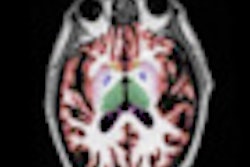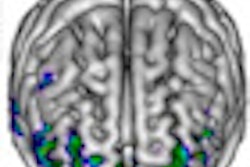PET imaging with the biomarker florbetapir is showing promise in preliminary research to detect the presence of beta amyloid in the brains of living patients to potentially confirm Alzheimer's disease, according to a study in the January 19 issue of the Journal of the American Medical Association.
The study, led by Christopher M. Clark, MD, of Avid Radiopharmaceuticals in Philadelphia, noted that both the diagnosis and treatment of Alzheimer's disease are hampered by the lack of noninvasive biomarkers of the underlying pathology. Between 10% and 20% of patients clinically diagnosed with Alzheimer's disease lack Alzheimer's pathology at autopsy. In addition, physicians may not diagnose Alzheimer's disease in 33% of patients with mild signs and symptoms.
Researchers used florbetapir-based PET to examine 35 patients from hospice, long-term care, and community healthcare facilities who were near the end of their lives. The PET images were compared with measures of brain beta amyloid that were determined by autopsy after the patients died.
PET images also were obtained from 74 young individuals (ranging in age from 18 to 50 years) who were presumed to be free of brain amyloid to better determine the frequency of a false-positive interpretation of a florbetapir PET image.
Florbetapir PET was performed an average of 99 days before death for the 29 individuals in the primary analysis group. Fifteen (52%) of the 29 individuals met pathological criteria for Alzheimer's disease, and an analysis of images and other data indicated a correlation between florbetapir PET images and the presence and quantity of beta amyloid pathology at autopsy.
"Florbetapir PET images and postmortem results rated as positive or negative for beta amyloid agreed in 96% of the 29 individuals in the primary analysis cohort," Clark and colleagues concluded. "The florbetapir PET image was rated as amyloid-negative in the 74 younger individuals in the nonautopsy cohort."
"This prospective imaging-to-autopsy study provides evidence that a molecular imaging procedure can identify beta amyloid pathology in the brains of individuals during life," according to the researchers.
The group also recommended additional studies to better understand an appropriate use for florbetapir PET in the clinical diagnosis of Alzheimer's disease or in predicting progression to dementia.
By Wayne Forrest
AuntMinnie.com staff writer
January 18, 2011
Related Reading
Lilly wraps up Avid buy, lands FDA priority review, December 23, 2010
C-11 PiB-PET shows first progression of Alzheimer's disease, December 16, 2010
Avid, Siemens begin florbetapir production, April 7, 2010
PET detects Alzheimer's disease likely to progress, December 15, 2009
Copyright © 2011 AuntMinnie.com




















